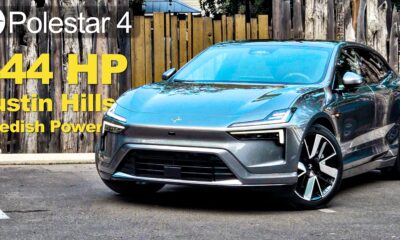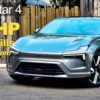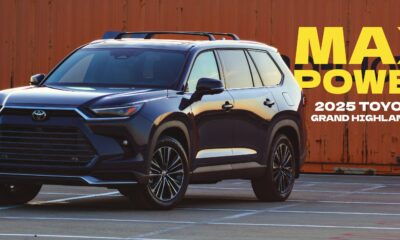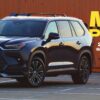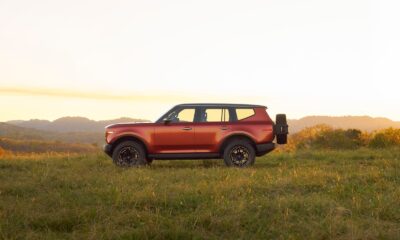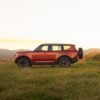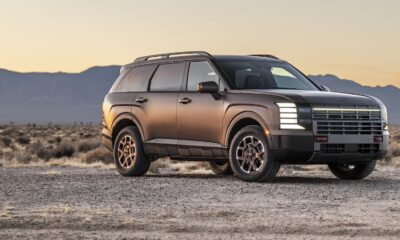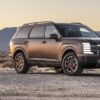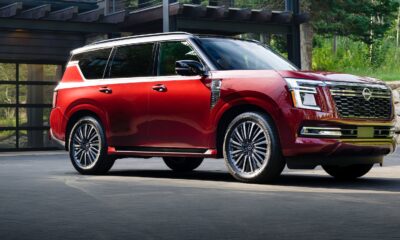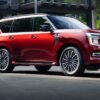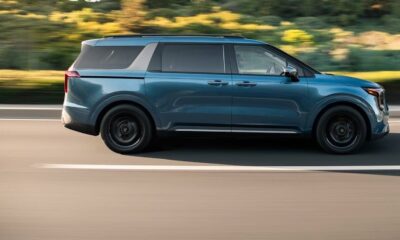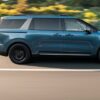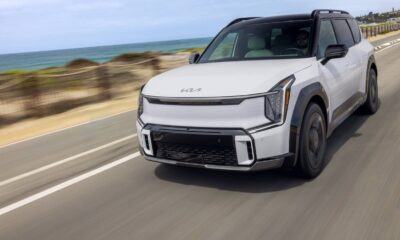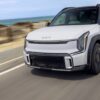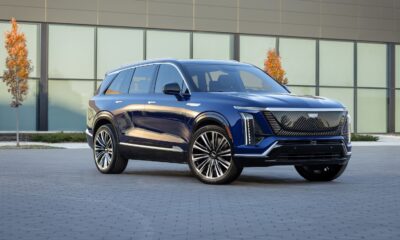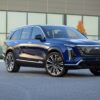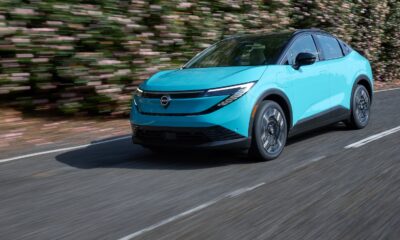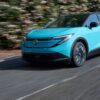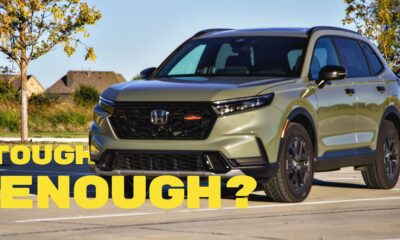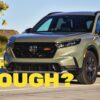Car Reviews
Meet the IONIQ 9: A Three-Row EV That’s Actually Worth the Hype
The electric SUV market isn’t slowing down—if anything, it’s speeding toward the family driveway. And while the early days of three-row EVs gave us some strange compromises, 2026 brings something different. Something big, bold, and polished. This week, I’ve been behind the wheel of the 2026 Hyundai IONIQ 9 AWD Performance Calligraphy, and after a week of school runs, photo shoots, back-road cruising, and the occasional regenerative one-pedal flex, I’ve got a lot to say. Spoiler: most of it’s good.
Want to see the IONIQ 9 in action? Be sure to check out the full video review over on the TXGarage YouTube channel. But if you’re here for the in-depth scoop, let’s dig in.
“Cyber Style, Southern Build”
The Cyber Gray Metallic paint on my tester might sound like something out of a sci-fi novel, but it works beautifully in the real world. Angular, deliberate, and proudly futuristic, the IONIQ 9 isn’t trying to blend in. Its squared-off profile and pixelated light signature borrow from Hyundai’s SEVEN Concept, and it translates cleanly to the road. The Parametric Pixel LED lighting front and rear adds a digital flair without being gimmicky.
From the flush-mounted door handles to the bold rear haunches and sloping roofline, the IONIQ 9 makes its presence known. A drag coefficient of just 0.27 Cd helps it slip through the air more efficiently than you’d expect from a vehicle this large. And large it is: at 199.2 inches long with a 123.2-inch wheelbase, it matches the footprint of full-size SUVs—only this one’s electric, quiet, and proudly built in Georgia at Hyundai’s new Metaplant.
My trim—the Performance Calligraphy AWD—goes a step further with exclusive fascias, body-colored wheel arches, and 21-inch alloy wheels that fill the wheel wells with intention. And yes, it has a panoramic glass roof. Because of course it does.
“Green Inside, Not Just in Emissions”
Open the door and you’re met with a bold splash of color: Dark Green on Dark Green, accented by aluminum trim, a microfiber suede headliner, and soft-touch everything. It’s elegant, but not fussy—clean lines, calming tones, and open space dominate the cabin.
Up front, a panoramic curved display stretches across the dash, combining a 12.3-inch digital instrument cluster and a 12.3-inch infotainment touchscreen into one seamless sweep. Hyundai’s UX remains intuitive, and yes, wireless Apple CarPlay and Android Auto are finally part of the package.
Seating in this trim is luxury-grade: heated and ventilated front and second-row seats, power captain’s chairs, and an Ergo Motion driver’s seat designed to reduce fatigue on long hauls. It even has a heated, power tilt-and-telescoping steering wheel—a must-have in anything aiming for comfort-first credentials.
The cabin layout is thoughtful, too. The center console—Hyundai’s Universal Island 2.0—slides fore and aft and includes dual-opening armrests and hidden trays. There’s enough room for everyone’s stuff, and thanks to the flat floor, passengers can move easily between rows. Whether you’re chauffeuring kids, adults, or folding the seats flat to haul gear, the IONIQ 9 adapts like a pro.
“Electric Torque, Family Force”
Beneath that sleek body is Hyundai’s E-GMP platform, and in this Performance AWD trim, it delivers serious muscle. Dual 157.3-kW motors—one front, one rear—combine for a stout 422 horsepower and 516 lb-ft of torque. It’s good for a 0-60 time of around 4.9 seconds, which is not just fast for a three-row SUV—it’s fast, period.
That power comes from a 110.3-kWh battery, offering an EPA-estimated 311 miles of range in this spec. Rear-wheel-drive models go farther, up to 335 miles, but AWD gives you added confidence and grip. This isn’t a canyon carver, but it does put its power down smoothly and quickly—great for merging, passing, and showing your passengers what EV torque really feels like.
“Quick to Charge. Built to Cruise.”
Charging is one of the IONIQ 9’s greatest strengths. Thanks to 800V architecture, it can go from 10% to 80% in just 24 minutes when using a 350-kW fast charger. Hyundai includes both a CCS adapter and native NACS port for Tesla Supercharger access—though early reports (and my own experience) suggest CCS still delivers the fastest rates for now.
You also get Vehicle-to-Load (V2L) capability, which lets you power laptops, camping gear, or even another EV using the included Vehicle Load Adapter. And yes, Hyundai Pay is built-in, letting you pay for parking and charging right from the screen.
“Big SUV, Bigger Energy”
If you’re buying a three-row SUV, you probably care about space—and the IONIQ 9 delivers. Behind the third row, you get 21.9 cubic feet of cargo space. Fold that row down and you’re working with 46.7 cubic feet. The second-row captain’s chairs fold flat too, creating an impressively usable cargo area. In AWD models like this, you even get a small frunk (1.84 cu. ft.)—perfect for charging cables or a roadside kit.
What’s better is the power-folding third row, controlled from the cargo area or the dash. And since the floor is completely flat, loading bulky items is a breeze.
“How It Drives, According to Texans (Me)”
This is where it gets real: how does the IONIQ 9 actually drive? In short—it’s smooth, quiet, and refined. This SUV is tuned for comfort, not corner carving. The ride is whisper-quiet at highway speeds, thanks to triple door seals, acoustic glass, and active noise cancellation (ANC-R). Hyundai even used foam-filled tires to reduce road noise.
But here’s the one gripe—and it’s shared across multiple industry reviews, not just mine: the suspension sometimes struggles with the vehicle’s weight. Over sharp bumps or rough pavement, the rebound can feel underdamped, almost like the shocks weren’t quite designed to handle all 6,000 pounds. It’s not a dealbreaker by any means—the rest of the driving experience more than makes up for it—but it’s worth noting.
Steering is light and accurate, and regenerative braking paddles give you full control over how aggressive the regen feels. Highway Driving Assist 2 brings semi-autonomous capability, combining adaptive cruise, lane centering, and even lane change assist when activated. It all works as advertised.
“What It Costs to Go Big & Electric”
Let’s talk numbers. The base IONIQ 9 S RWD starts at $58,955, which already includes a 110.3-kWh battery and class-leading range. But my tester, the AWD Performance Calligraphy, comes in at:
- Base MSRP: $74,990
- Cyber Gray Paint: $500
- Floor Mats: $230
- Vehicle Load Adapter: $220
- Freight & Handling: $1,600
- Total (as tested): $77,540
That’s premium money, no doubt—but Hyundai’s U.S. assembly means the IONIQ 9 is expected to qualify for the full $7,500 federal EV tax credit, potentially bringing the effective price closer to $70,000.
“Competitors? Considered.”
The IONIQ 9’s biggest competitor is its sibling, the Kia EV9, which offers a similar E-GMP platform and interior flexibility but tops out with less power and slightly less range. The Rivian R1S is more rugged and off-road capable but starts at $74K and climbs quickly past $90K. The Tesla Model X is faster and has better Supercharger access—but costs more and seats are tighter in back.
The IONIQ 9 hits a rare sweet spot: affordable luxury, real range, and true three-row usability, without weird gimmicks or compromise.
Final Thoughts: “Worth the Hype” Isn’t Just Clickbait
The 2026 Hyundai IONIQ 9 doesn’t just check the boxes—it redefines what those boxes even are. It’s quiet, luxurious, spacious, and smartly engineered. It’s not perfect—mainly due to suspension tuning that doesn’t quite match its weight—but it’s a true contender for best three-row EV on sale right now.
Whether you’re a longtime Hyundai fan, an EV skeptic finally ready to jump in, or just someone with three kids and a Costco membership, the IONIQ 9 is worth a serious look. It’s not just hype—it’s substance. Watch the full video review on our TXGarage YouTube channel to see the IONIQ 9 in motion and get even more perspective.



